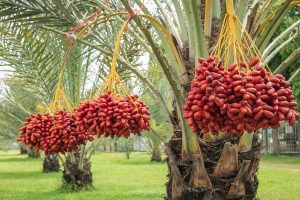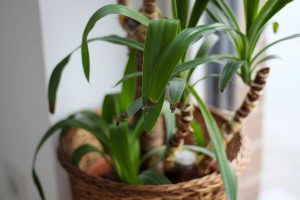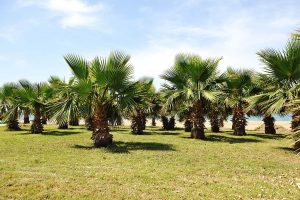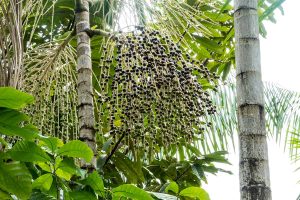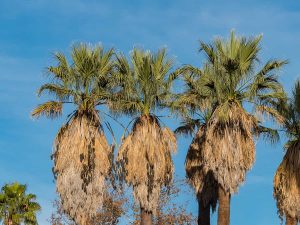The Ponytail Palm is misleadingly named because it is not a palm at all, and in fact, it is not even a tree. Instead, it is a type of succulent that belongs to the Agave family, and it grows in desert, rainforest, and mountain environments.
In the wild, the Ponytail Palm is a critically endangered species. Despite once being native to several states in Mexico, it now grows only in one. However, as a houseplant, the Ponytail Palm is quite widespread, and it remains popular across the world when grown indoors. Here we explore the origins of the Ponytail Palm and delve into the best ways to care for it as both a garden specimen and as a houseplant.
- Botanical name: Beaucarnea recurvata
- Common names: Ponytail Palm, Bottle Palm Tree, Elephant Foot Palm
- Plant family: Asparagaceae
- USDA hardiness zone: 9 – 12
- Mature height: 1 foot to 30 feet
- Mature spread: 2 to 10 feet
Table of Contents
What is a Ponytail Palm?
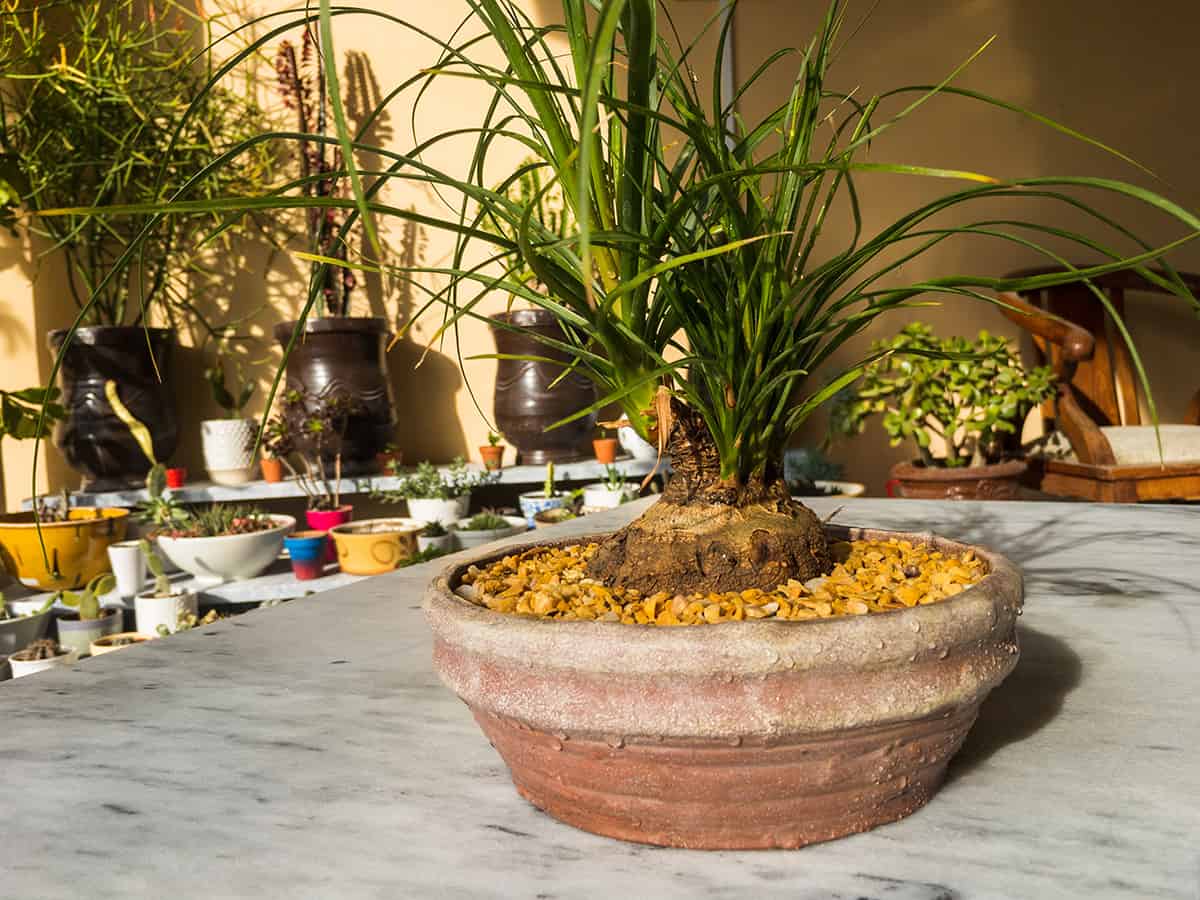
The Ponytail Palm Tree is a type of evergreen perennial succulent, which is neither a true palm nor a true tree. Palms all belong to the Arecaceae family, while the Ponytail Palm is a member of the Asparagaceae or Agave family. The Ponytail Palm has a single slender stem that closely resembles the trunk of a palm tree.
It is swollen at the base, creating a shape similar to an elephant’s foot or a longneck bottle, which is why the plant is also commonly called a Bottle Palm and an Elephant Foot Palm. The swollen base of the stem is where moisture and nutrients are held, and this enables the plant to survive through extended periods of drought by feeding itself with its own reserves.
At the top of each stem is a large tuft of strap-like leaves, which are thick and leathery in texture. This somewhat messy tuft is what represents a ponytail in the common name of the plant.
Ponytail palms are critically endangered in their natural environment as a result of the destruction of their habitat. They are popularly grown as houseplants, especially in Europe, and also as ornamental outdoor plants in temperate climates. In their natural habitat, the Ponytail Palm can reach between 20 and 30 feet in height, with a width of around 10 feet.
When kept indoors as a houseplant, the Ponytail Palm rarely exceeds 4 to 6 feet in height and can even top out as small as one foot tall. These plants are slow growing in any environment and will not flower until around ten years of age. When they flower, the plant produces clusters of small white or cream blossoms. Indoor Ponytail Palms rarely produce flowers.
Origins of the Ponytail Palm Tree
Ponytail Palms are native to the arid semi-desert areas of southeastern Mexico, Guatemala, and Belize. They also grow in the wild on cliffs and mountainsides, where the soil is rocky and infertile.
They were first discovered by a French explorer in the 1870s, who brought the plant back to Europe, where it became a popular decorative houseplant.
How to Care for Ponytail Palm Tree
Ponytail palms require very little care, and actually, they will thrive on neglect as long as they are positioned in a suitable environment.
Light
These plants thrive in full sun, but they can also perform well in partial shade. When kept as a houseplant, they should be kept in a bright spot with several hours of direct sunlight each day, for example, in a sunny window.
When grown outdoors, the Ponytail Palm can be positioned in full sun or beneath the dappled shade of a taller tree. In the hottest climates, the plant can benefit from some afternoon shade, but in most cases, it will fare just fine in full or partial sunlight.
Soil
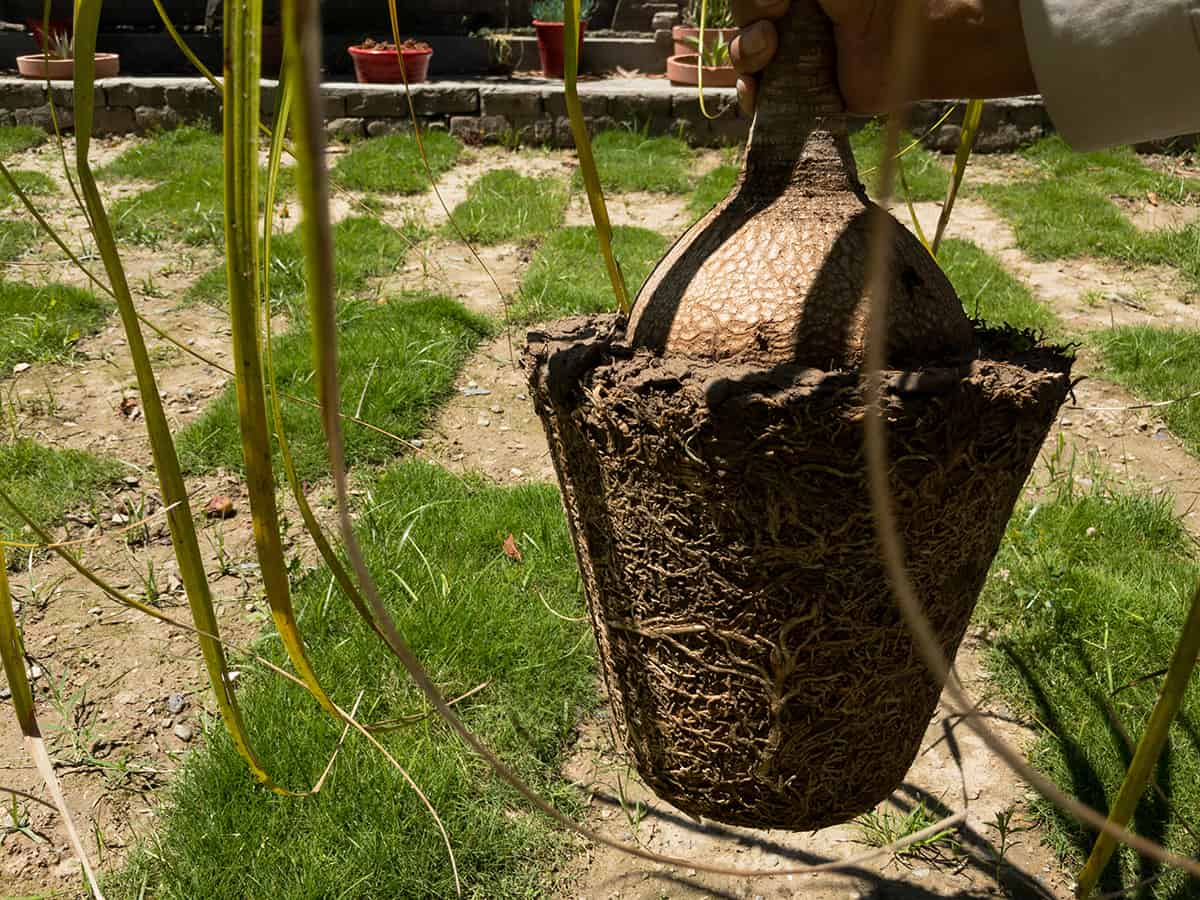
Ponytail palms will adapt to most types of well-draining soil. They cannot survive in wet or waterlogged environments, so soil that is able to drain in the event of heavy rainfall is essential.
Gritty, rocky, or sandy soils will be ideal for this plant. If your soil is not well draining, amend it with sand and gravel before planting the Ponytail Palm. For indoor Ponytail Palms, a cacti or succulent soil mix will be best, as these have better drainage qualities than regular houseplant soil.
Water
The Ponytail Palm is extremely tolerant of drought and can withstand dry periods for many months. This is a result of the water that is stored in the swollen base of the plant stem, which it can use to sustain itself in the absence of moist soil. When a Ponytail Palm is grown as a houseplant, it should be watered occasionally throughout spring and summer, which is the growing season.
During this time, generously add water to the soil and then wait for it to completely dry out before you water it again. You can test whether the soil has dried out by dipping a finger into the soil and testing for the presence of moisture, or you can lift the plant up and inspect the drainage holes on the base of the pot.
If the soil in the drainage holes is dry, then this means the rest of the soil will also have dried out. During fall and winter, you won’t need to water Ponytail Palms kept as houseplants very often. Once every month or two through this dormant stage will suffice.
If you are growing a Ponytail Palm outside, water the soil throughout spring and summer, taking care not to flood the soil to the point that it isn’t draining. Ponytail Palms need regular moisture through the warmer months. However, they will not tolerate wet soil, and this can quickly lead to root rot and the death of the plant. Outdoor Ponytail plants will not need to be watered through winter, as they will survive on rainfall.
Temperature
Ponytail palms are suitable for growing outside in USDA hardiness zones 9 to 12. They can be grown indoors as houseplants in any climate, and after the last spring frost has passed, you can move the plant outdoors for the summer if you wish, returning it indoors before the first frost in fall. Ponytail palms are hardy down to −5 °C (23 °F) and will thrive in typical room temperatures.
Humidity
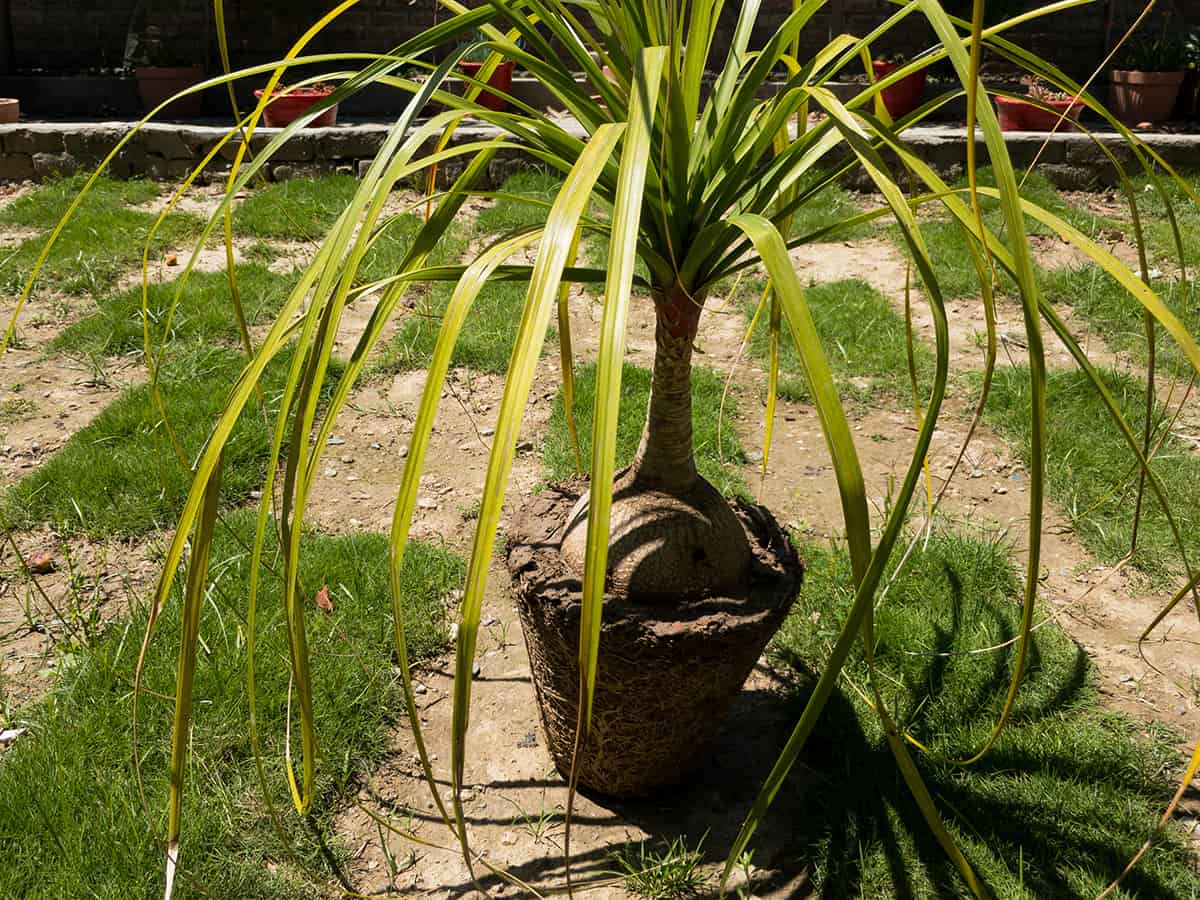
Ponytail palms do not require humidity, and in fact, they will fare best in environments with low humidity levels. As a houseplant, this makes them well equipped to cope with homes in the winter where furnaces and heating systems dry out the air. Avoid positioning this plant in a humid spot, such as in a regularly used bathroom.
Fertilizer
Ponytail Palms do not need to be fertilized since they are accustomed to growing in poor, infertile soils.
If your plant looks like it could use a boost of nutrients, then a cacti or succulent fertilizer will be suitable, or in the absence of a specialist fertilizer, use an all-purpose, slow-release liquid fertilizer. Do not fertilize the Ponytail palm more than once every 6 weeks through the growing period.
Ponytail Palm Tree FAQs
Are Ponytail Palms Fast Growing?
Ponytail Palms are exceptionally slow-growing plants. They will usually not reach their ultimate height for many decades, so you will require a good degree of patience when caring for this plant.
Outdoor Ponytail Palms will grow more quickly, at a typical rate of around 6 inches a year. When kept indoors, they are much slower, typically gaining just 2 inches in height per year.
Do Ponytail Palms Need Pruning?
Ponytail palms do not need to be pruned, making them very low-maintenance plants. If any of the leaves on the plant are starting to turn brown, these can be gently pulled away or cut off with a clean and sharp knife. If the ends of any leaves have turned brown, you can cut off these ends with scissors or shears. Avoid pruning the plant to alter its shape as this will encourage browning of the leaves.
Are Ponytail Palms Toxic?
The Ponytail Palm is a pet-friendly houseplant since it is non-toxic to cats and dogs. It is also not toxic to horses.
Can Ponytail Palms be Propagated?
Ponytail palms have one single stem, which forms the ‘trunk’ of the plant. When the main stem reaches maturity, you may find that new stems start to appear at the soil level. These new stems are offshoots known as ‘pups’. You can leave these stems to grow to form a multi-stemmed Ponytail palm, or you can cut them away to keep the main stem strong and central.
If you want to propagate the plant to grow new Ponytail palms, you can carefully remove these offshoots and plant them up as baby plants. To do this, firmly hold onto the pup and then dig down into the soil around it to find the spot where it joins to the main stem.
Carefully remove the pup from the main stem using a clean knife, keeping as much of the pup intact as possible, ideally with roots still attached. You can then plant the pup in a separate pot of soil and continue care as usual to grow a whole new Ponytail palm.

